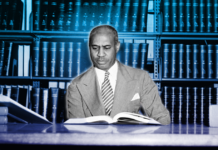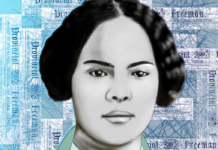Recently, on a podcast, I heard replayed the audio of Sandra Bland’s traffic stop. In case anyone has forgotten, Bland was stopped in 2015 by police officer Brian Encinia for failing to signal a lane change in an otherwise empty street. She was found dead in her jail cell three days later.
I wanted to turn it off, but I didn’t. I listened. Because in Encinia’s voice I recognized something beyond the obvious racism and spitting hate: I heard the thrashing rage of power confronted with noncompliance. As a high school teacher, that sound stopped me cold.
When I was in fourth or fifth grade, my teacher shook a student until his head bounced against the wall. The student had been smirking. It’s possible that the words “wipe that smirk off your face” had preceded the assault. I remember none of the circumstances of the event — not the boy’s crime, nor his name, nor the teacher’s name. But to this day, nearly 50 years later, I remember the emotional pitch in the teacher’s voice — the sense that he had moved beyond reason. He had “snapped.”
It’s worth remembering that, just as the history of policing in the U.S. lies (partly) in the capture and return of people who escaped slavery, a key part of the original mission of our public schools was to create a docile workforce. Teachers’ role as enforcers was, and remains, built into the system. When the principal walks into our classroom, our eyes do an adrenaline-triggered scan to make sure things are “under control.” We often feel that classroom “management” is our primary task. This is dangerous to our students because of what it does to us.
The fact that power creates fragility — a fear so intense it can lead to brutality — is evident in the ongoing history of deadly violence against Black people of all ages, whether perpetrated by white mobs or by armed police officers. What, then, is the risk run by our students — by all our students (my fifth-grade classmate was white) — but especially our students of color, who stand at the intersection of teachers’ anxiety over noncompliance and (I speak as a white teacher) our implicit bias?
I’m not saying that teachers shouldn’t enforce expectations. Call them rules, if you like. If I see a student thumbing a phone under the desk, I ask them to put it away. If it’s the third or fourth (or fifth or sixth) time, I take their phone or send them to the dean, making no secret of my frustration and annoyance. But I need to do a mental and emotional check every single time: I need to be sure that I’m responding to their behavior for a meaningful reason (it interferes with their work, is disrespectful to their classmates, etc.), not simply reacting because I’m being personally disobeyed. The distinction between these two motivations matters because the second — the panic of power challenged — is what leads to the whole abusive spectrum, from humiliating remarks to headbanging.
So, how do we perform such fine-tuned in-the-moment self-monitoring? As teachers, we’re used to split-second multi-layered decision making. We know how to read a room, a moment, an interaction, and how to assess the results of our actions over time until we’re guided by something that feels like instinct, but is actually experience. Learning to examine what’s going on inside us at a deeper-than-conscious level is another layer of challenge, but it can be done, and unearthing our own implicit bias is, simply put, our job. It takes education, practice, falling short, coming face-to-face with our insecurities, acknowledging our failures, persisting with humility. Rinse, repeat.
That’s the band-aid, and band-aids can make a difference.
But it remains to be said that monitoring our own behavior is not an adequate solution to a structural problem. When I check my reactions, I’m resisting institutional and cultural pressures that function systemically to make school a site of racist oppression. The flair of panic in a teacher’s gut when their power is contested by a student is less a product of the teacher’s personality than of their job description. We perform roles within systems.
And yet, for better or worse, I stay in school. I do my best to make my classroom a space of humanity, respect, and collective inquiry. On a good day, I believe my students feel called upon to participate in community building rather than forced into a compliance/rebellion paradigm. To enumerate my own and others’ strategies for this would take another few blog posts, but they boil down to trust and risk. Most recently, I’ve looked to Matthew R. Kay’s chapter on “safe spaces” in Not Light, But Fire: How to Lead Meaningful Race Conversations in the Classroom. (Kay offers both analysis and concrete strategies.) More distantly, it was Paolo Freire and bell hooks who first helped me see teaching and learning as relational and potentially radical.
And still, I’m left with the question: Is it possible to work within the system to change the very nature of education — its guiding purpose and its real-world enactment — away from a culture of compliance and control to one of community, growth, and empowerment?
I feel duty-bound to pursue the answer. I think our students’ lives depend on it.
Lise Brody currently teaches English Language Arts at Innovation Academy Charter School. She has taught high school for 18 years. An earlier version of this post ran on the Teaching While White Blog.










